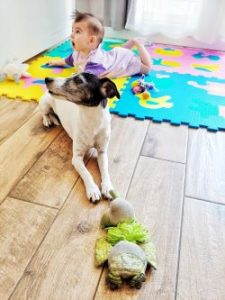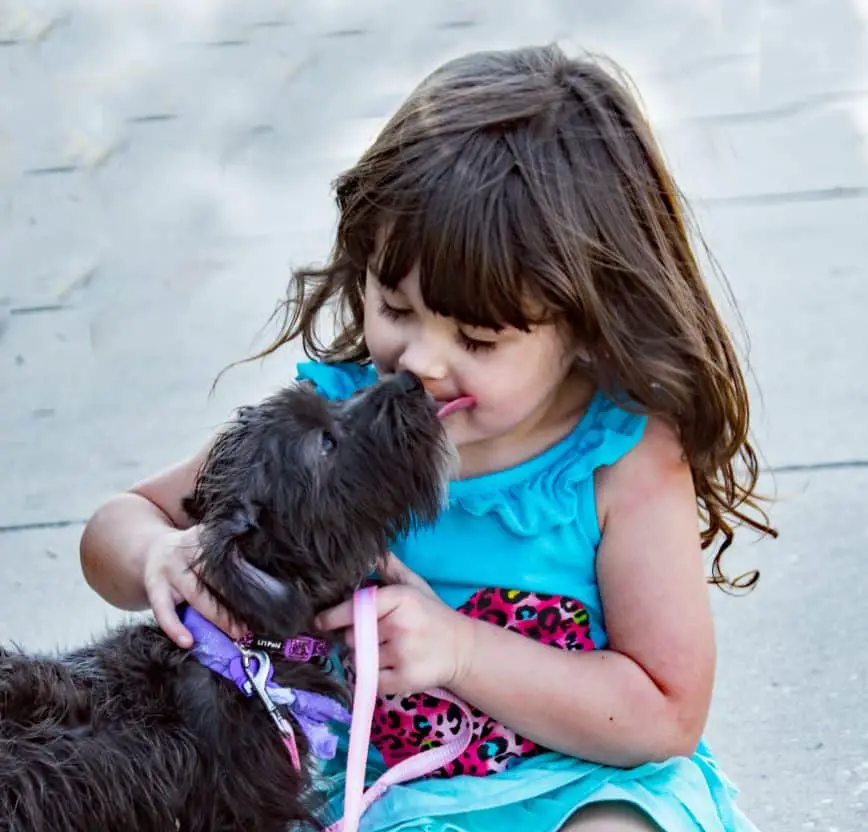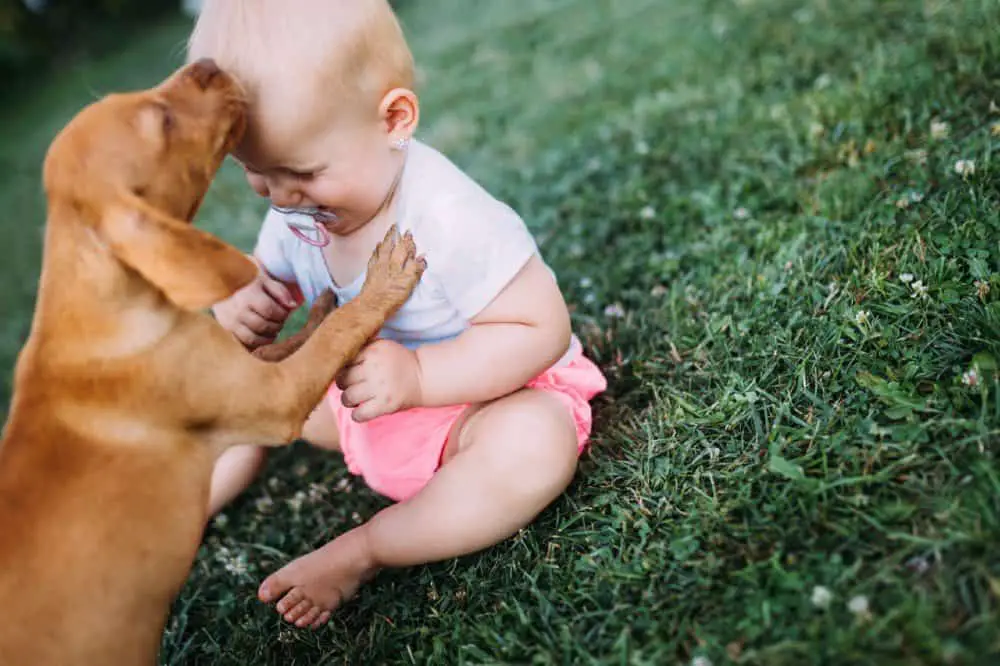Table of Contents
- Introduction
- How do you know if your baby is allergic to pets?
- What causes the allergic reaction to pets?
- What are the symptoms of a pet allergy?
- What triggers the allergic reaction to pets?
- When can babies develop pet allergies?
- How to manage pet allergies in babies?
- How can I treat a child with pet allergies?
- How can you tell if the baby is allergic to the pet?
- How can you tell if your baby has a cold or allergies?
- Are pets of any benefit to kids? Or are they harmful?
Introduction
Most people think that their family is not complete without a pet, especially when there are children at home.
The commonest pets are our furry four-legged dogs and cats.
Unfortunately, sometimes these pets trigger allergic reactions in babies and older children.
This presents a problem that is not easily solved, so what can be done to allow everyone to bond together without causing any harm?
In this post we will talk about the types of allergies that children can get from their pets and give suggestions about what you can do about them.
How do you know if your baby is allergic to pets?
Children love to play and cuddle with their pets. If you notice that your child sneezes or gets runny nose, itchy eyes, coughing or wheezing when the pet is around, the chances are great that the child is allergic to the pet.
What causes the allergic reaction to pets?

There are various reasons for allergic reactions to pets:
Genetic transmission
Some babies are overly sensitive to a lot of substances and it is just the way they were born. They have inherited certain traits from their parents which cause their immune system to over-react to certain proteins.
Your pediatrician might diagnose your baby as being atopic.
Atopy is the genetic tendency to develop allergic diseases.
This means that the child has inherited some genes from mother or father, which results in him or her having the tendency to develop allergic diseases such as runny nose (rhinitis), wheezing (bronchospasm or asthma), and skin rash (eczema or hives). Their immune system appears to be extremely sensitive and they react to several substances (allergens) with which they come in contact, whether by inhaling, touching, eating, or drinking.
Eczema is an inflammation of the skin. It is an itchy rash that usually appears in patches on the cheeks and body of a baby. The skin is very dry and easily cracked. It is sometimes called atopic dermatitis or “dry skin.” This is a genetic disorder that “runs in families.”
Bronchospasm is due to irritation and inflammation of the small branches of the lungs. When this happens, the space for the air we breathe becomes too narrow and this causes the wheezing or tight feeling in the chest
Non-Genetic Allergies
For unknown reasons, some babies will have an allergic reaction only to specific items, for example pollen, milk protein, certain medicines, and animals. In these cases, the tendency is not passed on from the parent to the child.
What are the symptoms of a pet allergy?
Whether the pet is a dog or a cat, the symptoms may be the same.
Some breeds, especially those that are furry or hairy and shed easily, tend to trigger a response more frequently than others, but all breeds can cause a problem.
The body produces special blood cells called antibodies; these cells are part of the immune system and they fight against certain substances called allergens when they come in contact with the sensitive person.
When this happens, the cells release chemicals, such as histamine, into the bloodstream, which can trigger reactions in different parts of the body.
Some of the common symptoms are listed below:
- The eyes might get itchy, red, swollen, and watery
- The nose might get runny, stuffy, and sneezy
- The throat might feel clogged and itchy
- There might be a postnasal drip from the sinuses causing frequent clearing of the throat
- The lungs might get inflamed causing coughing, tightness of the chest, difficulty breathing and wheezing
- The skin might get itchy and a rash or hives, might appear
- The stomach might be upset causing nausea or vomiting
- The abdomen might feel painful and crampy
- The child might just feel weak, irritable, and generally unwell
What triggers the allergic reaction to pets?

The commonest cause is the animal’s dander, but proteins in their urine, saliva and feces can also act as triggers.
Dander refers to the tiny particles that come off the skin of these animals and stick to just about everything that they touch.
These include, bedding, clothes, furniture, window blinds, drapes, carpets, toys, floors, and they also float around in the air.
These particles are so small that you cannot even see them.
In fact, the dander is the main cause of the allergic reactions, rather than the hair or fur on the pets.
However, the hair and fur will collect dust, pollen and mold, that can act as triggers for an allergic reaction.
When can babies develop pet allergies?
The immune system is not well developed in babies so they generally do not develop pet allergies before 2 years of age, however there are some babies who will show their intolerance by having frequent episodes of sneezing, runny nose and even wheezing and skin rash. This tends to occur at about 2-3 months of age.
If your baby appears to have an allergic reaction please take him or her to see a pediatrician right away, for examination and treatment. Do not try home remedies with a baby.
How to manage pet allergies in babies?
The best treatment for allergies is to avoid the allergen. An allergen is that substance that causes the body’s immune system to react and produce symptoms that are labeled as an allergic reaction.
Cats tend to cause more allergic reactions than dogs. They tend to lick and scratch themselves a lot and that might make their skin shedding even worse.
It might not be easy to get rid of a house pet so here are some other management suggestions:
- Try to keep the pet outdoors as much as possible and restrict its indoor presence to one area in the home
- Decrease or prevent your child from hugging or cuddling the pet
- Do not allow the pet to lick or nuzzle the child
- Do not allow the pet in the child’s bedroom
- Do not allow the pet to lie or sit on furniture, especially if they are upholstered
- Bathe the pet about twice per week
- Bathe and wash the child’s hair shortly after being in contact with the pet
- Clear the child’s nostril’s with normal saline rinse
- Clean the entire house regularly including the walls, ceilings, floors, fans, and furniture. Vacuum any rugs or carpets frequently. Use air conditioners rather than fans. Damp dusting is recommended to remove the sticky dander and other particles.
- Try to avoid rugs, carpets, mini-blinds, drapes, stuffed toys, and other objects that tend to collect dust
- Launder the clothes, towels, bedding about twice per week
- Cover the mattress and pillows with hypoallergenic covers. These decrease the chances of an allergic reaction.
How can I treat a child with pet allergies?
If the child is having mild symptoms of sneezing or itching you should remove the pet, change the child’s clothing, and give him or her a thorough bath including shampooing the hair. If the child is over 2 years of age, contact your pediatrician who might advise you to give him or her, some antihistamine that is available over the counter.
If there is any difficulty breathing or any swelling of the face, give the child some antihistamine and take him or her to the emergency room right away.
If the allergic reaction is life-threatening to the child and everything else fails, the pet will have to be removed from the home.
NB: Even if the pet is removed from the home and the place is cleaned thoroughly it might take weeks or even months to completely get rid of the dander.
How can you tell if the baby is allergic to the pet?
Sometimes it is not obvious that the pet is causing an allergic reaction in the child, especially if the symptoms start to show up after 2-3 years of age and the pet has always been in the home.
In such cases, there are several ways that one can check the source of the allergic reaction.
Since it might not be feasible to get rid of the pet, if the child remains well when he or she has been away from home but gets symptoms upon returning home, one might reasonably conclude that the pet is the cause of the problem.
However, sometimes the dander might travel with the child if the cleansing was incomplete and the child might still have some symptoms away from home.
If removal of the pet is not possible the best way to find out if the child is allergic is to take the child to an allergist, who is a doctor who specializes in allergies.
There are skin tests and blood tests that are available to check for pet allergies and these will determine whether the pet is causing the allergic reaction in your child.
How can you tell if your baby has a cold or allergies?
The symptoms of a common cold and an allergy are quite similar, with runny nose, sneezing, coughing and even wheezing sometimes.
However, the allergy symptoms usually have more itching and are more likely to have the skin hives type of rash than a cold.
In mild cases the allergy symptoms tend to last longer than 7-10 days if the allergen is always around the child. A cold usually gets better within 7-10 days.
In both cases some antihistamine, will give temporary relief of the symptoms.
Newborn babies tend to get stuffy nose and sneezing, but this does not mean that they have allergies or a cold.
Their nasal passages are quite narrow so the normal mucus that the body produces can easily block their nostrils which results in the congestion and sneezing.
This is easily treated with a few drops of normal saline in the nostrils followed by removal of the mucus with a small bulb syringe, which is usually included in newborn infant-care packages. Some parents use their mouths to suck out the mucus.
If there is a cause for concern, contact your pediatrician.
Are pets of any benefit to kids? Or are they harmful?
Pets provide physical and emotional comfort to children and adults.
However, newborns and infants should never be left alone with a pet.
The babies might make sudden movements that will scare a dog or a cat resulting in the child being scratched or bitten.
A baby who is creeping might eat the pet’s litter or its food and may even bite the animal, because they tend to put everything into their mouths.
The pets might also resent the presence of the new baby because the parent’s attention must be shared and most likely the baby will come first. One must be cautious when they have babies and pets at home.
The bacteria from a dog’s mouth or from a cat’s bite or scratch can cause serious illnesses in babies.
Some babies who have pets in their homes from birth, tend to develop less pet allergies than those who are exposed to them later in life. This might be due to the immune system being exposed to them at such an early age that the pet’s proteins do not appear as being foreign to the child’s immune system thereby preventing the formation of antibodies.
Pets are loyal and protective in certain circumstances. They bring joy and comfort to people of all ages, therefore unless the child’s pet allergy is severe, there is no reason why they cannot remain a part of a wholesome family.


